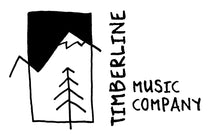Featured Concert Band Work
Posted by Bradley Saunders on
Each issue of the TMC Newsletter will feature a TMC work from existing and new Concert Band, Jazz Band, Concert Choir, and Vocal Jazz Ensemble, and covering all degrees of musical difficulty that TMC offers. We will also from time-to-time feature CD releases of our Timberline Express Big Band, as well as books and educational aids as they are produced by TMC.
“A Timeless River”
For Concert Band and Narrator
By Martin Behnke
I would like to take this opportunity to share just a bit about the music that came to be attached to the message expressed in “A Timeless River.”
BACKGROUND
James Douglass was Director of Bands at Oregon State University in Corvallis, Oregon, for many years. He and his bands were known throughout the Northwest as exemplary practitioners of the highest standards of university level music-making. With funding from the Athletic Department at OSU, Jim started the Northwest Band Camps in the summer of 1970, with the goal to "…promote music that will benefit school bands and generate enthusiasm in young students so that they will continue playing their instruments throughout intermediate school, high school, college, and beyond." Each summer since that beginning year, the camp has held forth, attracting over the years many music students who have gone on to play their instruments at all levels of education and accomplishment, including some who went on to achieve national and international recognition for their musical abilities.
By the time I came to Oregon in 1979, I had already known Jim Douglass by reputation as a band director at Oregon State University, and I had heard his band perform at a NW music
conference when I was teaching in Seattle. Over the years, Jim and I became good friends and in 2007, after he and I had both retired from our respective teaching positions, he invited me to join the faculty at his Northwest Band Camps, which I did - and continued until Covid shut the camp down in 2020. In 2010, when the camp was in its 40th year, Jim's delightful daughter Minde and I first discussed the possibility of a new band piece specially to commemorate the four decades of influence that Jim and the camp had had on the thousands of young folks who attended through the years. In 2011, Minde said "let's do it" and asked me to go ahead with the work, which would honor both Jim and the Camps.
Thinking then about what form and shape such a piece might take, I sat down to write. But what initially came out was not music, but words - words that ultimately formed themselves into a poem that seemed to want the title "A Timeless River." The poem had to do, of course, with music, but more importantly the power of music in shaping our lives, and in this case, the lives of the young people who were fortunate enough to participate in Jim's NWBC over the years. Out of that poem, then, came an original descriptive musical composition, which integrates the words and thoughts of the poem with several loosely parallel musical ideas collaborating to present an image of how the truly magical powers of music operate in our lives. It was a pleasure and a privilege, as a long-time friend and colleague of Jim Douglass, to write this piece in his honor - for all he had done for music education in the Northwest, and particularly for his vision and undying devotion to keeping young people involved in music throughout their lives. It was a sad day when Jim passed away in 2020.
THE MUSIC
“A Timeless River” is a grade four piece that uses narrator to express its poetic message, the effective integration of which is paramount to a successful performance. In performance, a quality PA should be used that allows the narrator to be easily heard, even during the moments when the ensemble plays underneath the spoken words – “just over the top.” The stanzas of the poetry should be presented in a deliberate manner, with an emphasis on clarity of enunciation and understanding. The timing of the various lines is not meant to be exactly aligned with the accompanying musical ideas and should be unhurried, paced so that the musical effect enhances and supports the poetry. As the ensemble becomes familiar with the piece, the timing will quickly become flowing and natural. Tempos are approximate, but the relative relationships of the tempos should remain in place for the desired effect.
View the score and hear the recording of this piece HERE.
I sincerely hope this piece brings peace and pleasure to all who hear and perform it, and that it joins in the pathway out of our current “chaotic roar” to a more peaceful and humane place for all of us riding this pale blue dot through the vastness of our universe at this moment in time.
